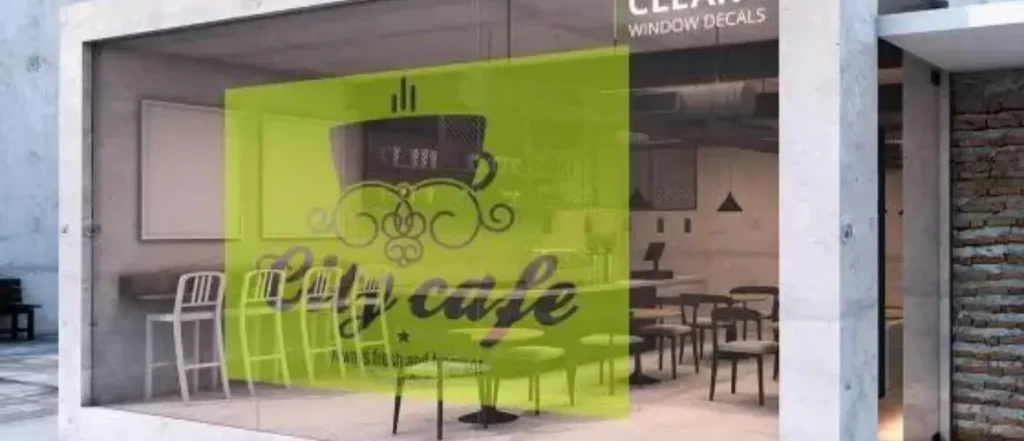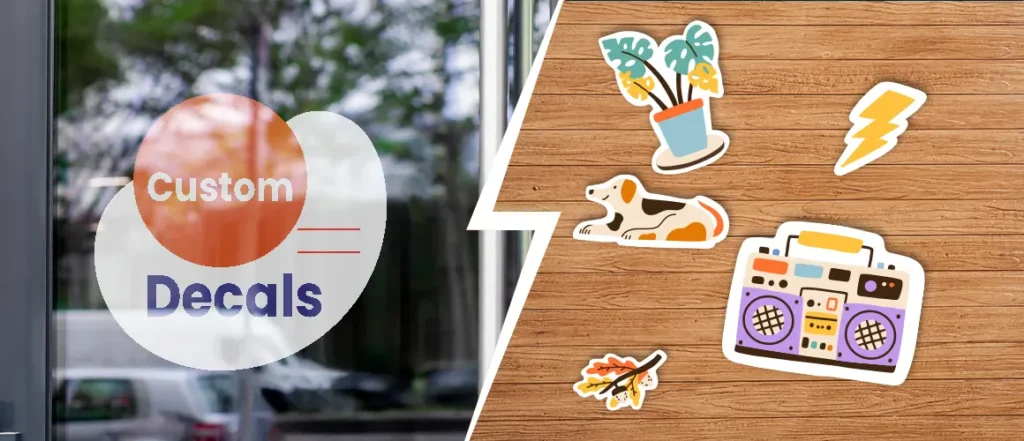Vinyl graphics have become a powerful tool for advertising because they are portable and look good on a variety of surfaces, such as cars, walls, and mailboxes. The key to a successful application is getting a professional finish that is free of bubbles and wrinkles, which requires careful attention to detail and following a set process. This complete guide goes over important steps on how to apply window stickers without bubbles, like how to use masking tape for accuracy, the squeegee technique, and the right way to use water and soap to allow for adjustments. When it comes to vinyl graphics, perfection goes beyond design and into execution. With these expert tips, you can confidently apply vinyl stickers for window signs, decals, or any other purpose, always getting a smooth and beautiful result.

I. Preparing the Surface:
As the first important step, prepare the surface where the vinyl graphic will be applied. A clean surface is necessary to avoid bubbles and wrinkles. Use a cloth to remove any dust or debris, making sure the surface is as smooth as possible for your graphic. For a thorough cleaning, mix water and soap together. If you skip this step, debris could show up as bubbles on the graphic or even cause damage.
II. Positioning the Vinyl Graphic:
1. Use of Masking Tape:
Before you put the vinyl graphic on, use small pieces of masking tape to position it on the surface. Get someone else to help you place it exactly where you want it. Using water and soap in this step keeps the adhesive from sticking permanently, so you can make changes if you need to.
2. Adjusting Position with Precision:
Adding water to the adhesive while moving the graphic around helps keep it from setting completely. This fluid application lets you make small changes without damaging the graphics. Carefully peel off the paper layer from the graphic without touching it.
III. Application Technique:
1. Spraying Liquid Soap:
As you put the graphic on the surface, use a spray of liquid soap to make it easier to move and stop it from sticking too soon. The soapy solution also creates a brief bond that lets you make changes as you go.
2. Squeegee Technique:
Once the picture is in place, use a squeegee to push out any water that is stuck under the sticker. Press evenly from the middle to the edges to get rid of any air and water spots. This step is very important for getting a flat, bubble-free surface.
IV. Final Touch:
1. Removing Masking Paper:
Once the water is gone, carefully peel off the masking paper from the graphic. This will show a perfect, flat vinyl sticker that does not have any bubbles or wrinkles.
Extending the Expertise with Advanced Tips for Vinyl Sticker Application
Achieving the bubble- and wrinkle-free vinyl stickers application is more than just learning the basics. As you learn more about this craft, these advanced tips and other information will help you improve your vinyl graphic game.
Advanced Tips for Surface Preparation of Window Signs
1. Surface Priming:
If you are applying the vinyl image to a surface with rough textures or that is made of porous materials, you might want to use a primer first. This extra layer will help the vinyl stick better and give the finish a smoother look.
2. Temperature Matters:
If possible, do the application when the weather is not too hot or too cold. Extreme heat or cold can change how the vinyl sticks, which could cause problems like drying too quickly or bonding too slowly.
Precision Positioning Techniques:
1. Measuring and Marking:
To make sure the vinyl graphic goes on correctly, measure both the surface and the graphic exactly. Mark important spots on both the surface and the graphic to help you line them up perfectly during the application process.
2. Hinge Method:
If you are working with bigger vinyl graphics, you might want to use the hinge method. To make a hinge, put masking tape along one edge of the graphic. This will let you lift and fix the graphic before fully sticking it to the surface.
Advanced Application Techniques:
1. Heat Application:
Adding heat to the signs & decals, either with a heat gun or a hairdryer, can make it more flexible. This is especially helpful when working with curved surfaces, since it lets the vinyl fit perfectly without affecting the smooth finish.
2. Layered Graphics:
When there are multiple layers of vinyl graphics, each layer should be applied separately. This way, each layer will settle properly, and there will be less chance of bubbles between layers.
Expert Squeegee Techniques:
1. Soft Squeegee for Delicate Surfaces:
Choose a squeegee based on the surface. For glass and other sensitive surfaces, choose a softer squeegee to avoid scratches while still getting rid of water well.
2. Angled Pressure for Edges:
Apply the squeegee at a small angle when you get to the edges of the graphic. This keeps air pockets from forming along the edges, giving the graphic a smooth, professional look.

Post-Application Care:
1. Curing Time:
Give the vinyl image enough time to cure before exposing it to the outside world. This will make sure that the window signs stick well and last a long time.
2. Protective Sealant:
For extra longevity, you might want to put a protective sealant over the vinyl graphic. This clear coat will protect your bright graphic from UV rays, weathering, and wear and tear, making it last longer.
Visual Guide: Step-by-Step Application Table
| Step | Action |
| 1. Surface Preparation | Clean the surface thoroughly, removing dust and debris. |
| Prime the surface if it is textured or porous. | |
| Ensure moderate temperatures for optimal adhesion. | |
| 2. Positioning | Measure and mark key points for precise alignment. |
| Use masking tape for the hinge method with larger graphics. | |
| 3. Application | Apply heat for enhanced flexibility, especially on curved surfaces. |
| Lift and adjust using the hinge method if necessary. | |
| 4. Squeegee Technique | Choose a soft squeegee for delicate surfaces. |
| Apply angled pressure along the edges. | |
| 5. Post-application | Allow sufficient curing time before exposure to elements. |
| Consider applying a protective sealant for added durability. |
Conclusion:
Precision, technique, and close attention to detail are needed to master the art of using vinyl stickers without bubbles or wrinkles. By using advanced tips like surface priming, temperature considerations, and expert squeegee techniques, you can take your window decals application to a professional level. The step-by-step table serves as a quick reference and makes sure that every step of the process is done perfectly.
Written by BannerBuzz editorial team.


 Posted in
Posted in 



